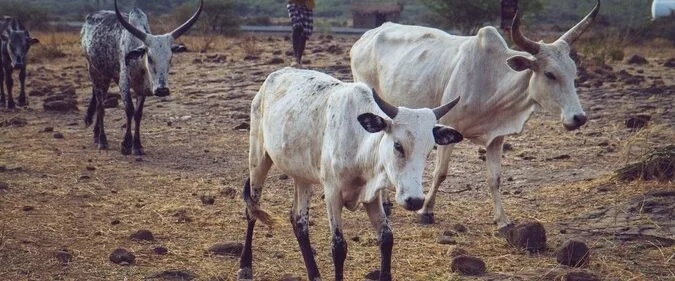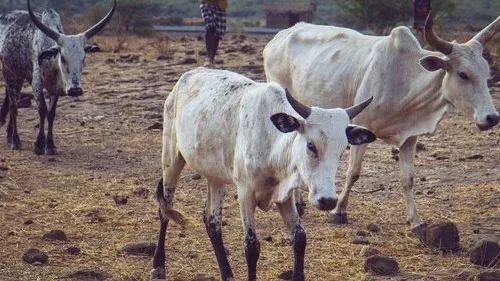What is an Ox?
An ox, or oxen when referring to more than one, is any male bovine over the age of four that has been trained to work. While the term typically applies to steers (a castrated male), any breed of cattle can be trained to become an ox.
Before the age of four, a steer in training to become an ox is referred to as a ‘working steer’. During their training, steers will learn a variety of commands. These directional cues are understood by other working animals too, such as sled dogs, herding dogs and some working horses.
Are Oxen and Ox the Same?
Yes, oxen is the plural of ox and is used when talking about more than one animal. Generally, ox refers to any castrated male cattle; females can be trained as oxen but this is rare as they are typically kept for producing milk and calves.
What do Oxen Do?
Oxen are trained to work on land, helping with a variety of tasks ranging from pulling carts and machinery to ploughing fields and carrying heavy loads. Oxen generally work at a slower pace than horses, which helps farmers to keep up with them while at work. They are also impressively strong and hard-working, able to pull weights greater than themselves with little fuss.
Oxen are an essential part of everyday rural life in countries like Ethiopia, where paired oxen can be seen ploughing land ready for a range of potential seeds to be sown, from teff to barley, or horse beans to chickpeas.
In many areas of the world, especially where there is drought, families may rely on their oxen’s ability to work for survival. SPANA’s mission is to prevent famine among these industrious working animals, thereby safeguarding the well-being of both the animals and their owners.
What do Oxen Eat?
Oxen are herbivores, so they primarily eat grass, hay and grains. It is crucial to ensure that working oxen receive proper nutrition to keep up their stamina and overall health. They have strong teeth to help them chew and eat tough plants and stomachs with four different chambers, designed to digest fibrous plants.
Five Interesting Oxen Facts
- Oxen have cloven hooves which means that the hoof is split into two toes.
- Oxen are often fitted with a yoke while they work which fits over the animal’s neck.
- If your birth year falls within any of the following years: 1961, 1973, 1985, 1997, 2009, or 2021, your Chinese zodiac sign is the ox.
- Musk oxen are a species of wild ox native to the Arctic. Their thick, fluffy coat keeps them warm.
- Oxen are thought to have been working for humans since about 4000 BC.
- To make an ox stop, just say ‘woah’.
Here at SPANA, our veterinary care helps oxen and other working animals all over the world. From providing medication and life saving care to oxen with wounds and illnesses, to saving them from natural disasters and poor conditions. Explore our success stories to learn about the specific working animals we have helped or make a donation and see how you could support working animals around the world.


